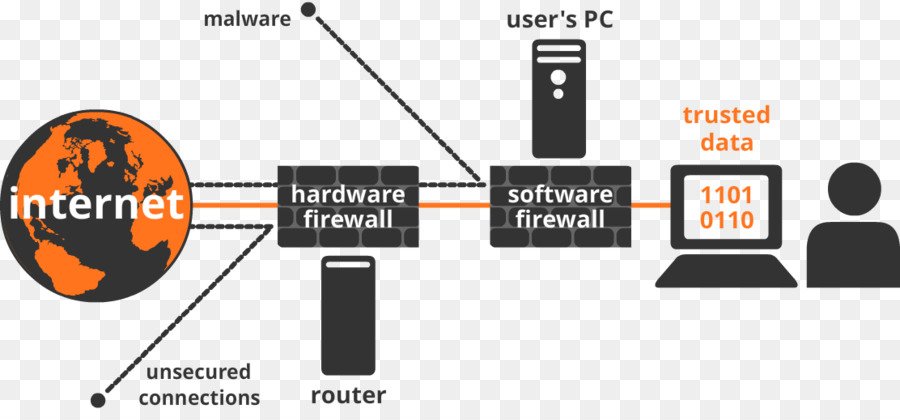Key Takeaways:
- Understanding the basic differences between hardware and software firewalls.
- Examining the advantages and disadvantages of each type of firewall.
- Exploring the scenarios where one might be more beneficial than the other.
- Learning about the cost implications and management differences.
- Understanding the potential security benefits of combining both types of firewalls.
Introduction to Firewalls
Firewalls have long been a critical component of any robust cybersecurity strategy. Acting as the first line of defense, they help prevent unauthorized access and protect sensitive data. But with the rise of different types of firewalls, notably hardware and software firewalls, it’s important to understand the hardware vs software distinctions to decide which might be best suited for your needs.
As cyber threats evolve and become more sophisticated, the debate over which type of firewall offers better protection has gained traction. Both hardware and software firewalls offer unique advantages and challenges, making it essential for organizations and individuals to comprehend their core functionalities and optimal use cases. Whether you’re a business owner looking to secure sensitive data or an individual looking to protect personal information, knowing the differences can be crucial to making an informed decision.
What Are Hardware Firewalls?
Hardware firewalls are physical devices that sit at the network’s gateway, filtering traffic between the internal network and external sources such as the Internet. These devices are purpose-built to provide network security by inspecting data packets in real time and blocking potentially harmful traffic. One of the key benefits of hardware firewalls is their ability to offer robust performance without compromising the system’s speed or functionality.
Since hardware firewalls are standalone devices, they are not subject to software conflicts that could leave a system vulnerable. These devices often come with advanced features like intrusion detection systems (IDS) and intrusion prevention systems (IPS), adding an extra security layer. Moreover, hardware firewalls are managed and configured via a dedicated interface, making them less prone to user error than software applications.
Advantages and Disadvantages of Hardware Firewalls
- Advantages: Hardware firewalls offer high performance, as they do not share system resources with other applications. Their dedicated nature means they can handle large traffic volumes without degrading network speed. In addition to this, they come with enhanced security features such as VPN support and advanced threat protection.
- Disadvantages: One significant downside of hardware firewalls is the high initial cost, which can be prohibitive for small businesses or individuals. Additionally, they often require expertise to set up and maintain, posing a challenge for organizations without a dedicated IT team. Finally, hardware firewalls are less flexible than their software counterparts, making them harder to adapt to rapidly changing security needs.
What Are Software Firewalls?
Unlike hardware firewalls, software firewalls are applications installed on individual computers or servers. These firewalls monitor and control the incoming and outgoing network traffic based on an organization’s security policies. Because they are software-based, they can be easily updated to respond to new threats, offering high flexibility and adaptability.
Software firewalls can be configured to monitor specific applications, making them particularly effective at regulating what kinds of data are allowed to enter or leave a system. They offer user-friendly interfaces that make it easy to set up rules and modify them as needed. This type of firewall is highly versatile and can be customized to meet specific security requirements, making them suitable for a wide range of use cases.
Advantages and Disadvantages of Software Firewalls
- Advantages: One of the primary advantages of software firewalls is their cost-effectiveness. They are generally cheaper than hardware firewalls, making them an accessible option for small businesses and users. Additionally, software firewalls are easy to install and configure, often requiring minimal technical expertise. Their flexibility allows for fine-tuned configurations that can be easily updated to accommodate changing security needs.
- Disadvantages: Despite their benefits, software firewalls do come with some drawbacks. They utilize system resources, impacting the performance of other applications running on the same machine. Furthermore, because they are software-based, they are subject to vulnerabilities and conflicts with other software systems. This could leave the system less protected compared to a hardware firewall.
When to Use Hardware Firewalls
Hardware firewalls are often used in enterprise settings or by organizations that need to manage high traffic volumes. Their ability to handle large-scale operations makes them particularly useful in scenarios where performance and high-speed access are critical. For example, businesses that deal with PCI compliance often opt for hardware solutions to ensure they meet stringent security standards. These organizations must protect sensitive payment information, making robust security measures imperative.
In addition to handling high traffic volumes, hardware firewalls are ideal for environments where centralized security management is required. They allow IT administrators to monitor and control the security of an entire network from a single point, simplifying the management process. This makes hardware firewalls preferred for large enterprises with complex network infrastructures.
When to Use Software Firewalls
Software firewalls are suitable for smaller businesses or individual users who need basic protection without the high hardware cost. They also benefit users who need the flexibility to customize their security settings. According to TechRadar, many modern software firewalls offer comprehensive features that rival their hardware counterparts, making them an excellent choice for those who need robust security on a budget.
Software firewalls are particularly advantageous for remote workers or small offices that do not have a dedicated IT staff. They are easy to install and configure, offering a user-friendly solution for securing individual machines. Furthermore, the ability to update software firewalls quickly ensures they can adapt to new threats as they emerge, providing ongoing protection without significant intervention.
Combining Hardware and Software Firewalls
For optimal security, many organizations choose to use both hardware and software firewalls. This layered approach, often called a defense-in-depth strategy, ensures that even if one layer of defense is compromised, the other remains intact to provide continued protection. This strategy is especially important for businesses that handle sensitive information and cannot afford security breaches.
By combining hardware and software firewalls, organizations can leverage the strengths of both types. Hardware firewalls can handle large traffic volumes and offer robust security features, while software firewalls provide flexibility and ease of configuration. Together, they create a comprehensive security solution that can adapt to various threat scenarios. This multi-layered approach is crucial for modern cybersecurity strategies, where no single solution can completely protect against all threats.





